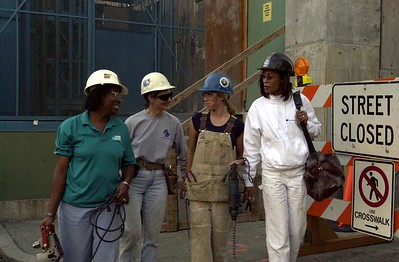Google can be a little creepy at times. For example, today it pulled several stories for me regarding growing shortages of workers with technical skills. The stories came from all over the United States: Arizona, Michigan, Virginia and Pennsylvania. Also in the feed was a story about the sharp decline in enrollment of Black men at the nation’s community colleges. Google capped off the day’s reading with a story that speculated about the causes of declining enrollment at community colleges, and the threat posed by for-profit colleges.
Free-market mechanisms tend to take care of shortages, regardless of what and where they are. In this case, the shortages provide opportunities for both prospective workers and community colleges. Certain critical industries are short on skilled workers. Each of the stories cited critical needs for additional workers in construction and skilled trades (HVAC, electrical, plumbing, masonry, etc.); health care workers; and computer science.
In Pittsburgh, COVID-19 is likely to trim new commercial construction starts by 30% or more in 2020. Many planned construction projects ground to a halt in the first and second quarters. Despite the growing demand for skilled trades workers, the long layoff left many construction workers with uncertain job prospects.
In Michigan, the construction industry is facing two problems: first, the shortage of workers is hampering the construction industry. A significant number of the state’s skilled trades workforce left during the Great Recession. So, replacing those workers has been an ongoing challenge.
Second, the outward migration has left the remaining workforce both older and less diverse in terms of race and gender. That’s causing some firms to scramble to form partnerships with minority-owned and woman-owned subcontracting firms. With fewer racially diverse workers and fewer minority-/woman-owned firms in the marketplace, that can be a tall order.
Without intervention, the technical skills shortage is likely to go on
Solving for the technical skills shortage and boosting minority workers in the industry isn’t a simple matter. This fall, community college enrollment is down by nearly 10%. Enrollment figures suggest that there are even fewer Black males enrolled this year. That will pose a longer-term problem for the construction industry, because community colleges are a significant source of workers in skilled trades. A lack of women and minorities in the existing workforce and a lack of women and minorities in the workforce pipeline mean that the technical skills shortage will continue long after the pandemic is gone.
In Tennessee, Southwest Tennessee Community College’s fall enrollment is down by nearly 25%. The school serves predominantly low-income students. Enrollment by Black males is down nearly 27% and enrollment by Black females is down nearly 28%.
Money is not the problem because Tennessee has a statewide free community college program. (Elsewhere, the cost of community college education has risen by 22%.) Joblessness is the most likely cause for the enrollment declines. Many of STCC’s students work in industries heavily impacted by the pandemic. Tennessee is actively contacting more than 800 Black male students who had been enrolled in degree programs but did not register for classes this fall. STCC’s goal is to identify barriers that prevent these men from returning to school.
Community colleges can lead in addressing skills gap
The technical skills shortage is almost universal in the United States. The demand for minorities and women in skilled trades occupations is high and growing. Community colleges must take a more active role in recruiting students to address the technical skills shortage. Developing industry sponsorships to help reduce or eliminate the cost of attendance is one strategy. Building strong support mechanisms for female and minority students who want to enter fields currently dominated by white males is another. Creating a college-to-industry pipeline that includes mentorships, internships and job placement for students is yet another way to address labor shortages.
The other critical thing that community colleges can do to boost enrollment among low-income students is to keep their costs low. Rising costs actively thwart opportunities for low-income students, so minimizing costs is essential. That may mean using taxpayer-approved bonds for construction projects; reducing administrative costs and other unnecessarily large expenses.
Community colleges can do a lot to help industries address the technical skills shortage. We need administrative leadership that focuses on recognizing these opportunities, and then finding students to fill the classrooms.
Photo Credit: Seattle Municipal Archives , via Flicker



















